This is actually one of the first articles I planned on writing when I started this blog, but I felt I needed to fill in some background first. While this article is my first article about wearables, it follows my articles The long goodbye to passwords and Who do you trust with your identity?, the reasons for which will become clear as you read below.
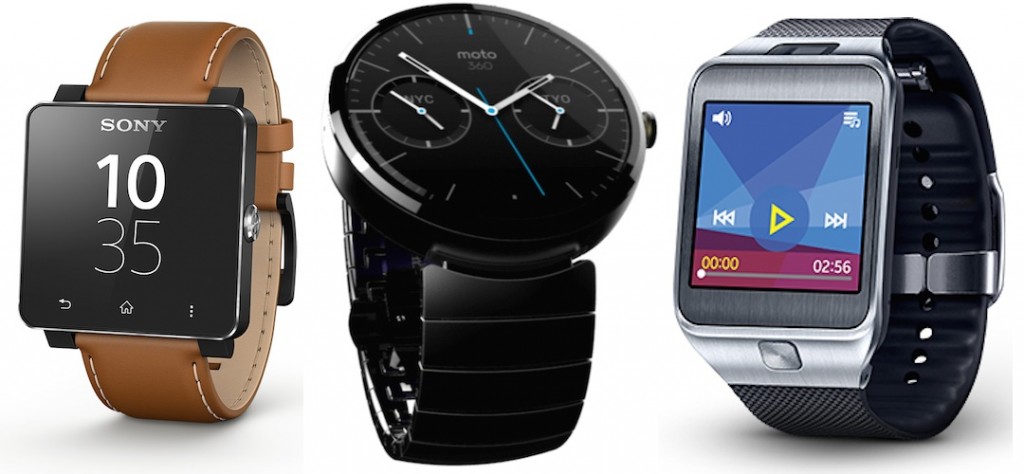
Wearables is clearly an exploding category of products right now. Lots of money is being invested and lots of companies are springing up. I tried to look just at what companies I could find with Twitter accounts, and found over 100 companies. The technology, from sensors to screen quality to battery life have all converged at a ‘good enough’ level that has encourages lots of experimentation in this field. There are many types of wearables, but I think they can be roughly classified.
Classification
Let’s start by breaking up the very large and growing category of wearables into a few types. While you can further break down the differences, I break them up into three groups:
- The all-in-one
- The single-purpose
- The multi-position
The all-in-one is still emerging, but it generally takes the form of a watch, is referred to as a smartwatch, and eventually will cover a large range of functions including fitness, security, notifications and running apps. Right now the product attempting to sell into this category include the Samsung Gear 2, the Sony Smartwatch 2 SW2, the Motorola Moto 360, and the LG G Watch. Of course, Apple’s entry into this space with their expected ‘iWatch’ has been feeding the rumor mills for years.
http://youtu.be/dnerqDWwVgg
The single-purpose includes fitness bands like the Fitbit Flex, Jawbone Up24, and the Nike Fuelband SE, as well as security wristband Nymi. These bands generally do one thing and try to do just that one thing really well.
http://youtu.be/yggn7P4pRUw
The multi-position is a variation on the single-purpose. Generally it is still focused on one thing, usually fitness, but the multi-position wearables can be used in a variety of locations on your body to track things that the simpler single-purpose bands cannot. The best example of a multi-position wearable is the Moov, which can be worn in many places, and can be used for running, biking, swimming, etc. Other devices like the Sony Core or the Fitbit Force are moving in this direction, and I expect these and other companies will try to copy the Moov in the future. Multi-position wearables will always have a place complementing the all-in-one wearable, whereas the single-purpose wearable have a high likelihood of getting supplanted (except at the low end).
http://youtu.be/ExhD6UWEV8I
There are some devices that don’t quite fit into these categories. Some fitness trackers can also do notifications. Some wearables are looking to add health data collection to headphones. There will always be some overlap between the categories, but I think in general they’re pretty solid.
The Three Factors
I would argue that there are three factors in the success of wearables. The first two apply to almost all wearables, and the third to the all-in-one category. These three factors are:
- Battery Life, Ease of Charging
- Style (i.e. do you want to wear it?)
- The three capabilities – notifications, health, and authentication/commerce
Battery Life and Charging
Let’s start with Battery life and charging. Any wearable, if the battery doesn’t last long enough or it a pain in the neck to charge, will find itself being left behind whenever the user forgets to charge it, which will be often. Even if it’s easy to charge, but the battery doesn’t last very long, the device won’t get used. There’s a reason Samsung is pitching that its new Gear 2 watch, which switched from Android to Tizen OS, has a three times longer battery life than the previous Galaxy Gear watch. If your watch dies when you need it, you’re never wearing it again.
Style
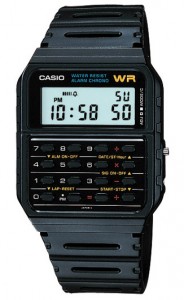
Style is something overlooked by some manufacturers. The new Pebble Steel was a response to people not wanting to wear a watch that looked like a toy all day. This is true of all wearables, but even more so for the all-in-one devices, since they generally replace a watch. Functionality is nice, but without style people are not going to wear a watch. If functionality trumped style there would be a lot more people wearing Casio calculator watches right, since calculators are useful? We don’t all walk around with calculator watches because in the end, form trumps function. Once there is form, style, let the companies compete for functions. The companies that don’t have form, won’t be able to compete in function.
If you take a look at who Apple VP Phil Schiller follows on Twitter, you’ll notice companies like Patek Phillipe, Panerai, and A. Lange & Söhne among the few accounts he follows. These are all high-end watch companies. No doubt Schiller enjoys quality watches. What would it take to get him to switch from wearing a Patek Phillipe to wearing an iWatch? Answering this question probably helps to figure out why Apple hired the former CEO of luxury brand Yves Saint Laurent last year, and more recently has been rumored to be trying to hire employees out of luxury Swiss watchmakers.

Part of style is size. While large watches might be fashionable for some, they’re not generally worn by the majority of people. As an extreme example, look at the Rufus Cuff which is currently finishing up a successful Indiegogo campaign. For the 700 or so people who bought them, the product dubbed a ‘wrist communicator’ instead of a wristwatch since calling it a watch was absurd even to them, there are some great features. I’m pretty much an alpha-geek, and I can’t imagine wearing this all the time (and I probably wouldn’t be able to anyways as it would be sitting on my desk charging).
In short, you have to want to wear your wearable device, and if you don’t think it fits with your personal style, you won’t be wearing it.
Notifications, Health, and Authentication
The most common wearables today are fitness bands like the Jawbone Up24, the Fitbit Flex, etc. These are mostly good at what they do, and some people don’t mind wearing them all the time, but the question is what if you also want the authentication features of the Nymi band? The notifications available on the Razor Nabu? How many of these bands can one be expected to wear at once? The answer for the great majority of people is only one. There is more room for wearables that one uses for specific activities, but there’s only room for one full-time wrist-worn wearable in my opinion.
This is why ‘smartwatches’ are moving to cover all three of these areas.
Notifications is what I consider the primary feature of current smartwatches. This will grow more sophisticated, as the notifications come from the device itself instead of from a connected smartphone. An always-on, location-aware, biometrical-linked device is incredibly useful for many reasons.
Health is a very complicated issue (look at the demise of Google Health), and as these health-tracking devices get more sophisticated, I expect that few companies will be able to master the space. Large companies entering the space will invest a huge amount of money hiring experts in a vast array of health and fitness-related fields. Large companies can also probably make a better argument for keeping your health data secure. I don’t think you want to find out your life insurance was rejected, or cost three times as much as it should, because a faulty sensor made it look like you had a heart murmur, and the insurance company used that to adjust your rate (or to reject you altogether). When you have a device strapped to your wrist 24 hours a day, extracting all kinds of health-related information from your body, you want to make sure that data is secure. I’m sure there will be some success from smaller companies in this area, but not every company that can produce the technology will be able to succeed in providing the proper analysis to you, or to insure that your data is safe from prying eyes.
While the Nymi may be the first authentication-oriented wearable, I don’t believe this kind of device can exist on its own. This is an important feature (see below) but it is not a standalone feature.
A Look at Authentication and Commerce
You might have noticed that among my list of all-in-one devices currently in the market, none actually has all of the capabilities I’ve suggested are required for such a device. For the most part these devices are currently extensions of smartphones and are focused on notifications from the phone. Health tracking features are slowly being merged into the devices as well. The devices are becoming more useful separate from a connected smartphone.
The piece that no one has added yet is the third authentication factor for commerce. With security disasters like heartbleed in the news, the need for truly secure commerce is more needed than ever. Two-factor authentication is great, but truly secure commerce, online or in physical stores, will only arrive when a device that you have authenticated as owned by you, can authenticate you are using it via biometrics. This sounds complicated, but will actually be seamless. Whenever you attempt to make a purchase, your watch will simply ask you to confirm it. In the background the payment service will check which device is linked to your account, send an authentication request, the device will do a biometric check, and then will prompt you to approve the specific purchase amount. Ideally the biometric check will not require any input (like a fingerprint) but could check automatically using a passive biometric feature such as cardiac rhythm.
As mentioned in my earlier article The Long Goodbye to Passwords, wearables will help bring in the era of three-factor authentication. The three factors are what-you-know (a password), what-you-have (your device), and who-you-are (a biometric sample). With a smartwatch two out of the three can be handled just by the fact that you’re wearing the device. Now for the price of entering a password, you have much more secure authentication. This opens up secure commerce, not only for online purchases but in retail stores as well. It’s not coincidence that PayPal has partnered with Samsung to offer secure payments using the fingerprint scanner on the Galaxy S5, nor that PayPal is working hard to get Apple as a partner as well. Whoever controls the authentication of consumers, can control the flow of their money as well. If Apple decides to go it alone and cut PayPal and credit card companies out of the picture, they could seriously shake up the payment industry.
The All-in-one emerges
This is where the all-in-one wearables will become popular. They will not only offer the conveniences of the currently existent devices, but will fold in health monitoring and allow secure commerce. The trick then will simply be to fulfill the other two factors I identified above – having good battery life and being something people will want to wear.
Good battery life will always be a challenge and I suspect this will be achieved through the creative use of alternate charging technologies. This could include things like kinetic charging (like a self-winding watch), solar charging, or even absorbing energy for the user’s body heat. Anything that adds to the charge of the battery life will be helpful.
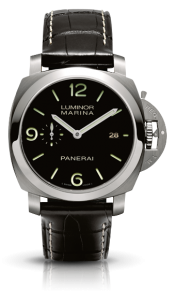
Making the watch something people will want to wear means increased miniaturization. Of course style is a major factor in getting people to wear a device all the time, but without serious miniaturization you can’t have a very stylish watch. The problem many of the smart watches have today is that they’re absurdly large. Phil Schiller may follow Panerai (on Twitter), the luxury watch companies famous for making oversize watches, but most people wouldn’t wear such large watches even if they could afford them. The all-in-one needs to be small. That means the battery needs to be small. That means the battery has to be really efficient, or there needs to be some of the aforementioned charging technologies assisting to keep it charged.
Sure, there were people who bought Samsung Galaxy Gear watches. Just look on eBay and you can find hundreds of them. As these devices start to integrate health features, add authentication, and get small enough to encourage the average person to wear them, these devices will definitely hit the mainstream.
The all-in-one will not be the only game in town
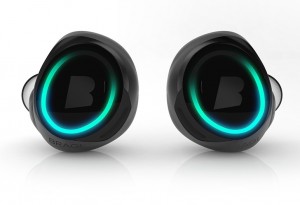
While I do believe the all-in-one category will suck the oxygen out of the room for some of the fitness band companies, once they begin to integrate the same features, there will always be room for smaller more specialized wearables in specific categories. Lots of people don’t even wear watches today, so if they’re only interested in health features then a simple band on their wrist that cost $50 instead of $350 might seem ideal.
Multi-position devices like the Moov will also find a place. No one is going to put their smartwatch on their ankle when they go biking to calculate their cadence, or attach it to their golf club to analyze their swing. Products like the recently crowd-funded Dash, which offers fitness tracking and heart rate monitoring in a pair of wireless headphones, and can also be used as a bluetooth headset with your phone, will also find their place inasmuch as they replace existing devices that people already rely on (I personally wear a wireless headset and a heart-rate monitor when biking, and this could replace both and offer more features). Hopefully the companies that take the pole position in the development of health-related devices will open up their software to allow third-party devices to integrate their data into the user’s health stream.
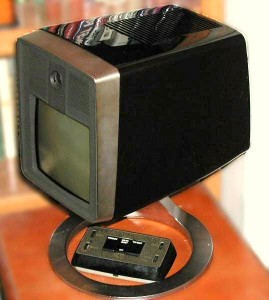
It’s a very interesting time in wearable technology. I feel like what we’re going to see in the next few years will make existing wearables and watches look like the AT&T Picturephone (from 1969) looks like today compared to Skype or FaceTime on your cell phone.
I’ve worn the same watch, more or less, for over twenty years. I’ve had other watches, but in the end my water-proof self-winding steel watch is the most practical watch I’ve ever worn. I’m hoping to see wearable devices that will be more useful, and more practical, soon hit the market. Now I just need to start factoring in wearable tech to my budget (wearing the same watch for twenty years has the added benefit of not spending money on upgrades).
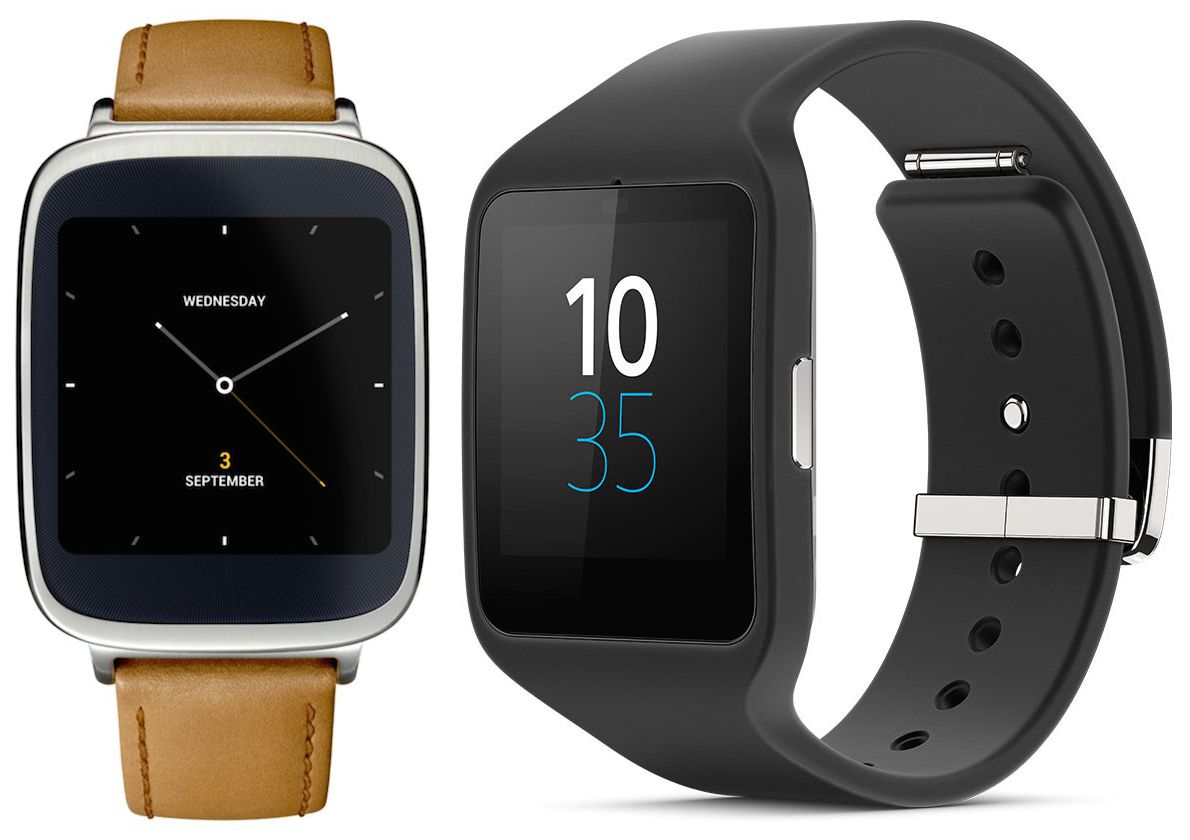
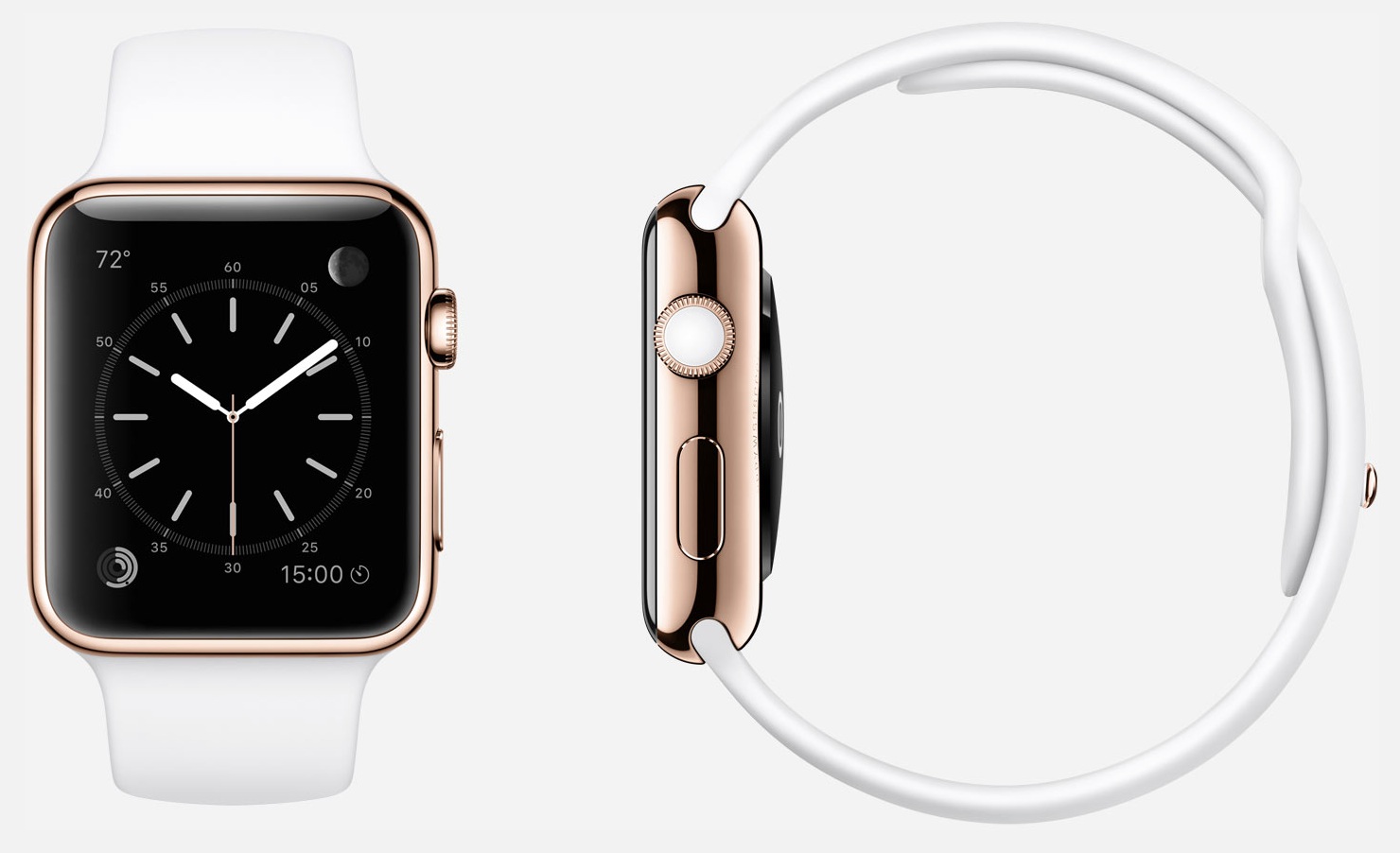

Pingback: What if Apple made watch movements instead of watches? - off on a tangent
Pingback: On the brink of an Apple wearable - off on a tangent